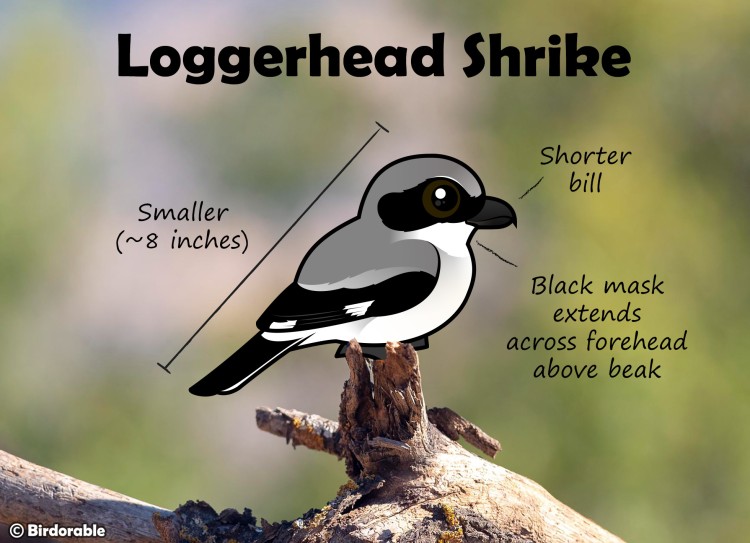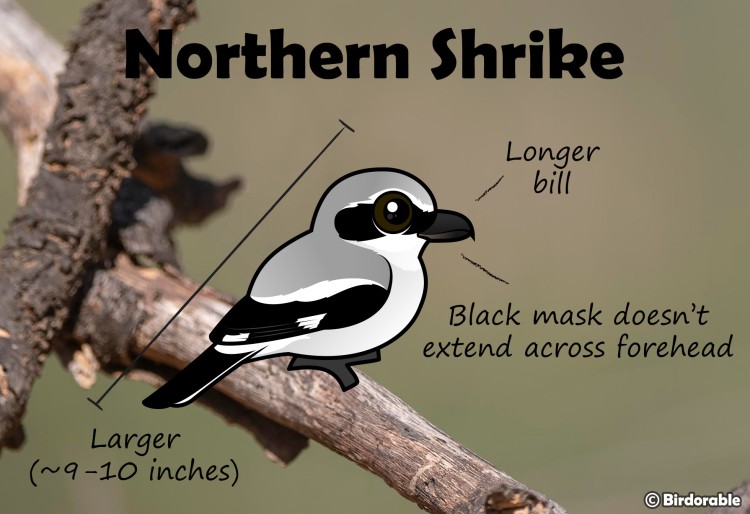Loggerhead vs. Northern Shrike: How to Tell Them Apart
Spotting a shrike perched in the wilderness of North America might just be a highlight for birdwatchers and nature enthusiasts alike. But did you know there are actually two types of shrikes to look out for in this vast continent? Yes, the Loggerhead Shrike and the Northern Shrike share this expansive territory, and while they might look similar at first glance, there are some key differences to help you tell these two species apart.

Birdorable Loggerhead Shrike
Size Matters
Firstly, size matters when distinguishing between these feathered predators. The Northern Shrike is the larger of the two, measuring about one to two inches longer than its counterpart, the Loggerhead Shrike. This size difference can be a helpful indicator, especially when you spot a shrike from a distance and are trying to make a quick identification.
Beak Performance
Secondly, take a closer look at their beaks. The Loggerhead Shrike sports a shorter beak compared to the Northern Shrike. This feature is not just about size; it's about survival. The beak of each species has evolved in a way that best suits their hunting styles and the types of prey they target, which brings us to an even more distinctive characteristic.
Masked Marvels
The third, and perhaps most visually striking difference, lies in their facial masks. The Loggerhead Shrike's black mask extends across its forehead and above the beak, giving it a unique appearance. In contrast, the Northern Shrike's mask does not. This facial marking is a key identifier and is usually the first thing birdwatchers look for when trying to differentiate between the two species.

Birdorable Northern Shrike
Now, here's a fascinating (albeit somewhat gruesome) fact about both shrikes: they are known to impale their prey on thorns or barbed wire! This behavior might seem shocking, but it's a remarkable adaptation. Both the Northern and Loggerhead Shrikes lack the powerful talons of birds of prey, so they've developed this method to secure their food. They use their hooked bills to tear apart larger prey, such as lizards, mice, shrews, and even other birds, that they've skewered onto sharp points. It's a bit macabre, sure, but it's also shows the incredible ingenuity of nature.
So, if you ever come across a lizard or a small rodent stuck on a thorn or a piece of barbed wire, you've likely stumbled upon the handiwork of a shrike. Whether it's a Loggerhead or a Northern Shrike depends on the clues they've left behind: the size of the bird, the length of its beak, and the distinctive pattern of its mask. Identifying these birds adds an exciting layer to birdwatching, offering a glimpse into the fascinating and sometimes fierce world of avian predators.










Comments
Leave a comment
Thank you!